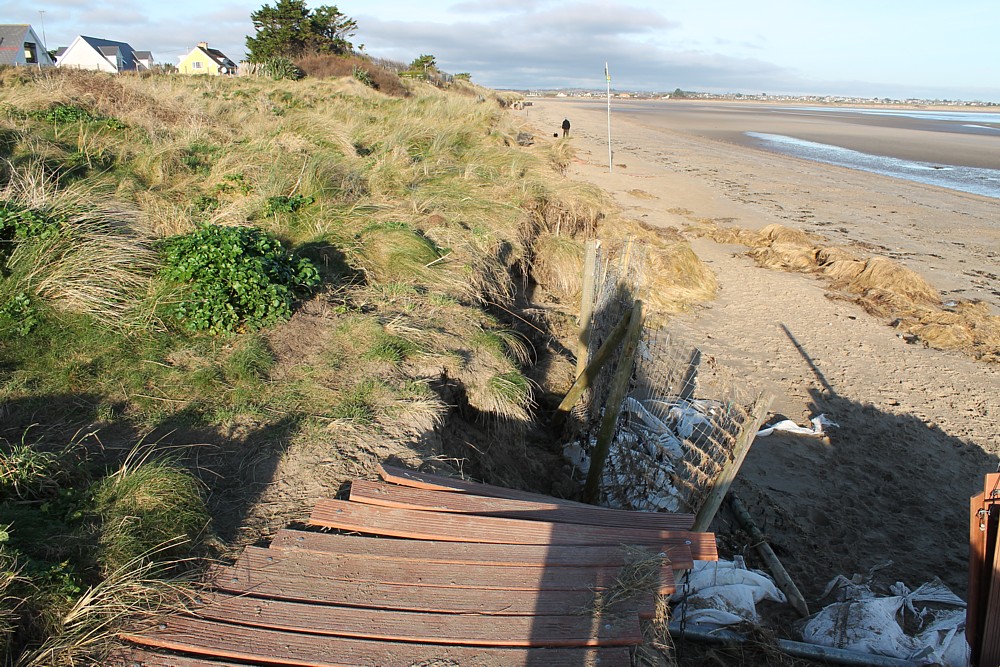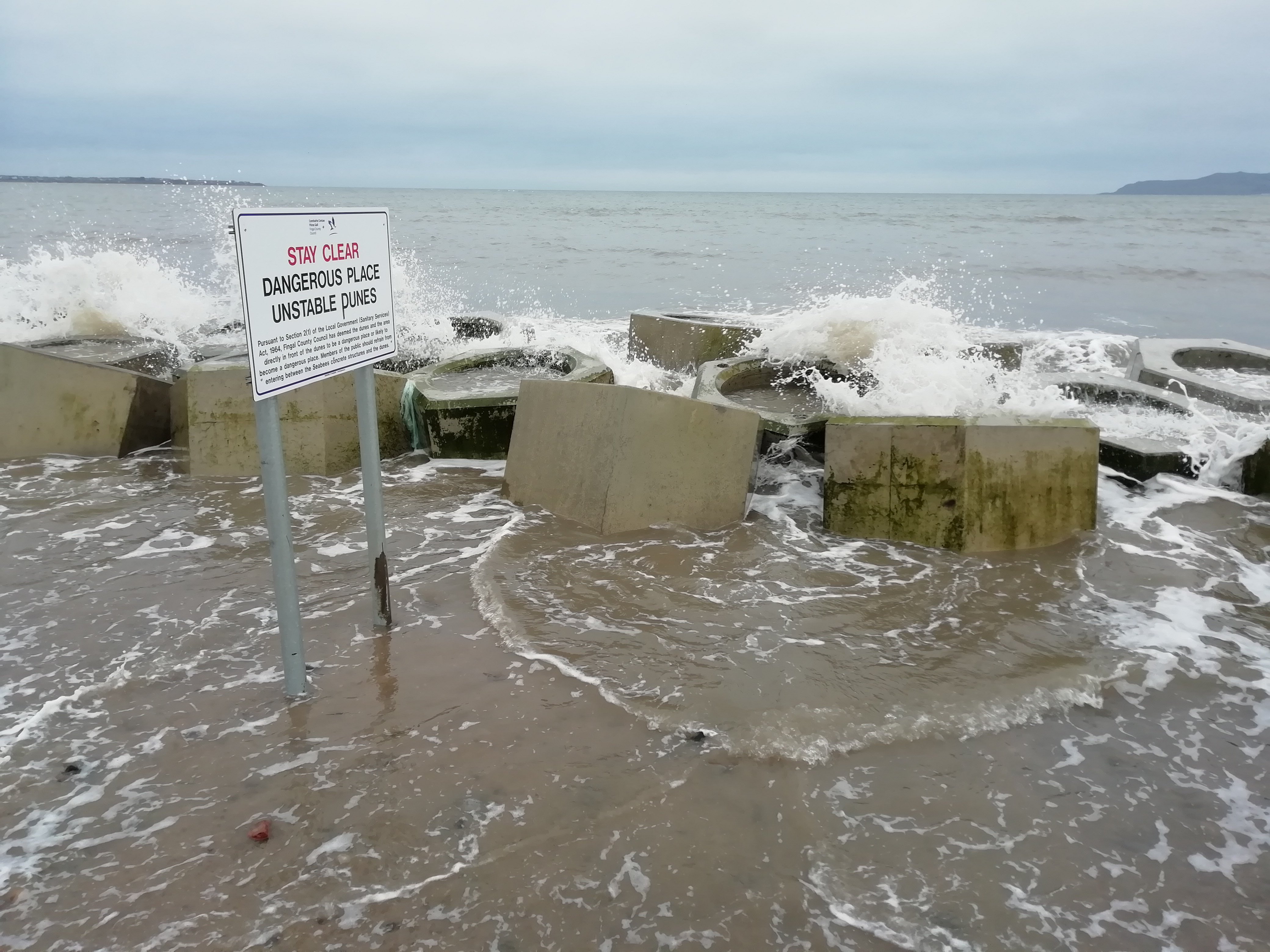Shrinking Ireland: Global Warning in Local Communities

All Global Research articles can be read in 27 languages by activating the “Translate Website” drop down menu on the top banner of our home page (Desktop version).
***
A recent walk at a local beach revealed to me how fast coastal erosion is affecting local communities. This area where I live is essentially a peninsula with two large popular beaches, Donabate beach and Portrane beach which are joined by cliffs, on the coast of north County Dublin, Ireland.
I have already written about erosion at Donabate beach and erosion at the cliffs over the years but, in a far worse condition, is Portrane beach.
As can be seen from photos I took in 2013 compared with the ones I took a few days ago, coastal erosion is happening at a significant rate.
Portrane Beach (looking south), 2013 (Photo: Caoimhghin Ó Croidheáin)
Portrane Beach (looking south), 2021 (Photo: Caoimhghin Ó Croidheáin)
According to one local resident, David Shevlin,
““We live in the midsection of the beach and our property has lost upwards of about 20 metres of established garden since 2018. […] At the current rate of erosion, our garden was 30 metres and it’s gone to 20 metres in two years so it doesn’t take much to calculate that we don’t have very long.”
Portrane Beach (looking north), 2013 (Photo: Caoimhghin Ó Croidheáin)
Portrane Beach (looking north), 2021 (Photo: Caoimhghin Ó Croidheáin)
The local council has tried to stem the rate of erosion with concrete Seabees before more permanent groynes are constructed. A groyne is a structure built perpendicular to the shore, that interrupts water flow and limits the movement of sediment and can be made out of wood, concrete, or stone. According to a local spokesman the Seabees will be “an interim solution pending the installation of specially designed Y-shaped groynes structures which will be complemented by a beach renourishment scheme in order to achieve a suitable beach level. This will reduce incident wave energy along the coastline by limiting the prevailing water depth and thus mitigating the threat of erosion.”
The seriousness of the problem can be seen as the Seabees are almost completely submerged at high tides.
Seabees, Portrane Beach, 2021 (Photo: Caoimhghin Ó Croidheáin)
The Housing and Planning Minister, Darragh O’Brien, has commented that:
“Around Ireland, it’s projected that by 2050, the impact of coastal erosion could potentially affect up to 2 million people who live within 5km of the coast, all the major cities, and much of the country’s industry and infrastructure and utilities, including transport, electricity and water supplies.”
A European Commission document describes Irish vulnerability to climate change:
“Ireland is the third largest European island. It is situated at the north-west of continental Europe. The coastline measures 4 577 km, bordering the Atlantic Ocean on the north-west and the Irish Sea on the south-east. More than 50% of the population lives within 15km of the Irish coastline. Most of the population is concentrated in cities, with the major coastal cities being Dublin, Cork, Limerick and Galway.”
They further note that:
“Approximately 20% of Ireland’s entire coast is at risk of erosion. Sea Level Rise (SLR) combined with an increase in severity and frequency of coastal storms is expected to exacerbate the problems, especially along the Atlantic coast.”
Portrane Beach, 2021 (Photo: Caoimhghin Ó Croidheáin)
Historically, vertical seawalls were common but now flat-sloped revetments (sloping structures placed on banks or cliffs in such a way as to absorb the energy of incoming water) using rock or unusual shaped concrete units are used to reduce impact on beaches.
It is interesting to see that
“in the US hard structures such as revetments and groynes are no longer allowed in many states because of potential negative impacts on the beach and coastal protection is provided by nourishing the beach with sand brought in from external sources. This is called beach nourishment and is now the most common method of coastal protection worldwide but is rarely used in Ireland and it needs to be repeated every three to five years to replenish lost sand. This recurring cost does not fit well with how Irish projects are funded.”
Portrane Beach, 2021 (Photo: Caoimhghin Ó Croidheáin)
*
Note to readers: please click the share buttons above or below. Forward this article to your email lists. Crosspost on your blog site, internet forums. etc.
Caoimhghin Ó Croidheáin is an Irish artist, lecturer and writer. His artwork consists of paintings based on contemporary geopolitical themes as well as Irish history and cityscapes of Dublin. His blog of critical writing based on cinema, art and politics along with research on a database of Realist and Social Realist art from around the world can be viewed country by country here. He is a Research Associate of the Centre for Research on Globalization.
He is a Research Associate of the Centre for Research on Globalization.
Featured image: Portrane Beach, 2021 (Photo: Caoimhghin Ó Croidheáin)








